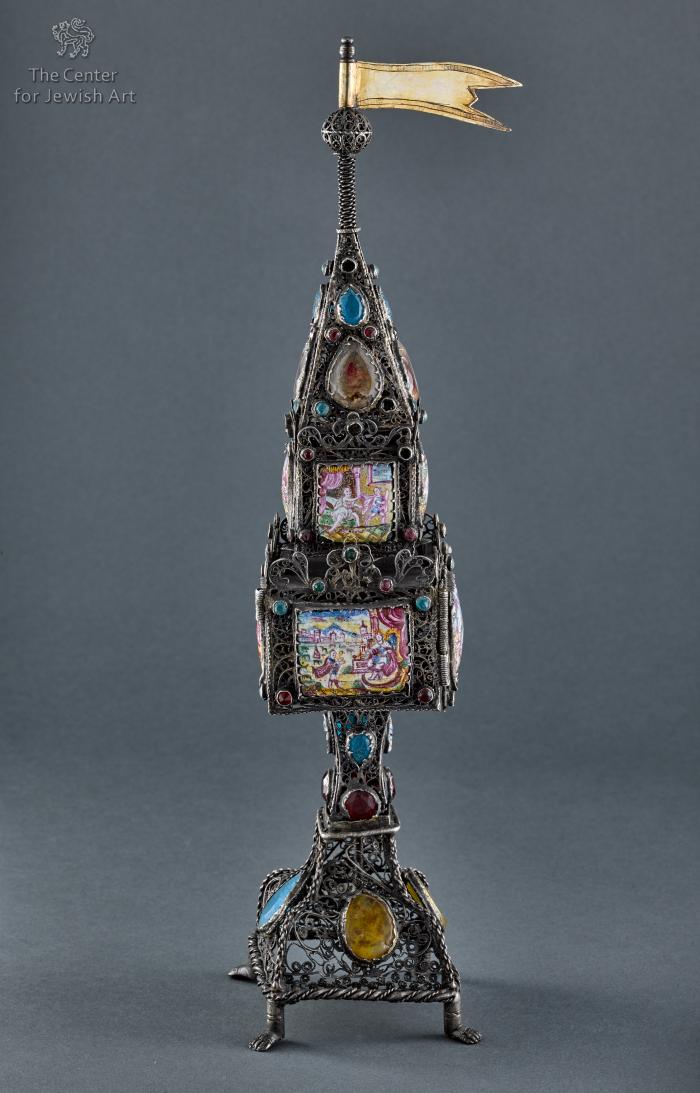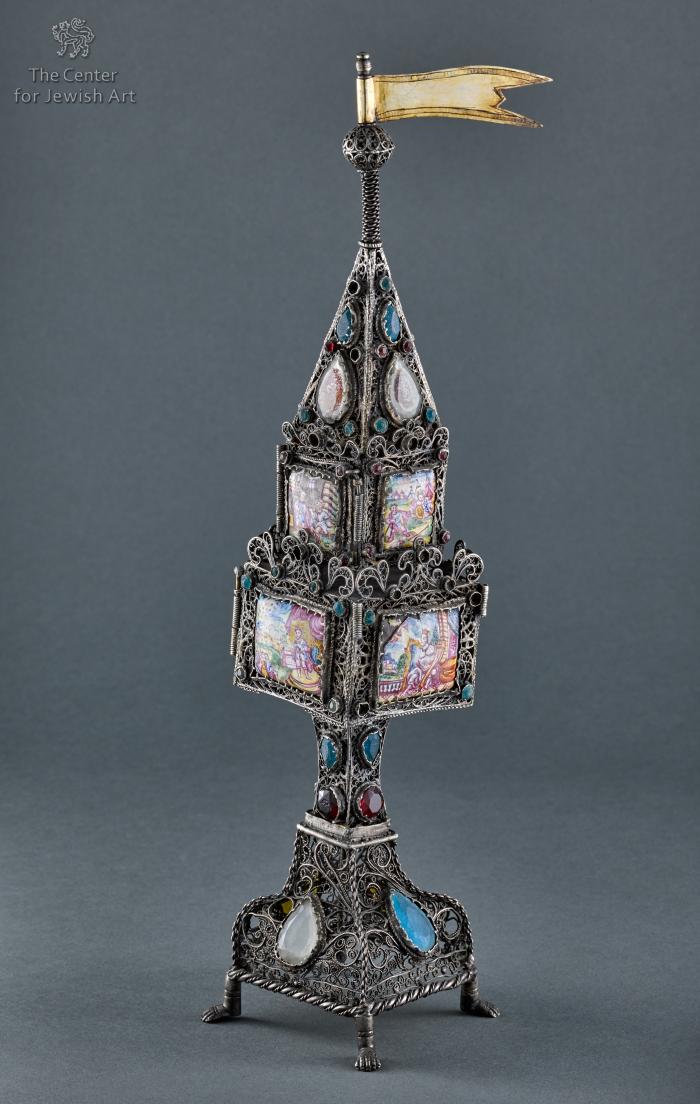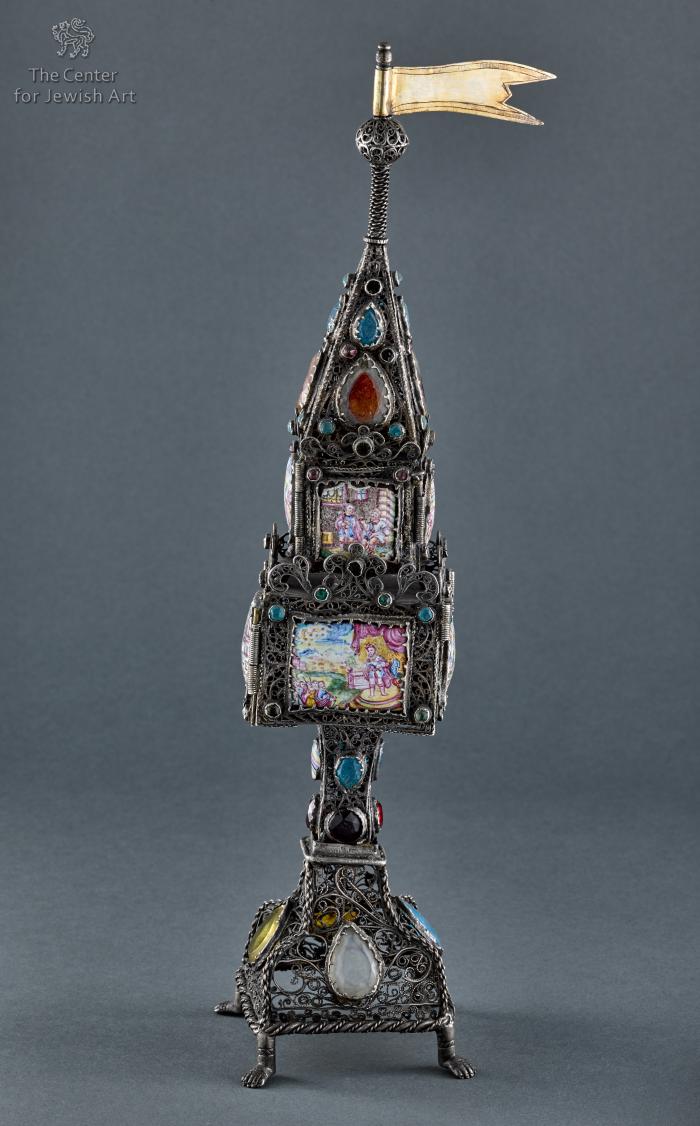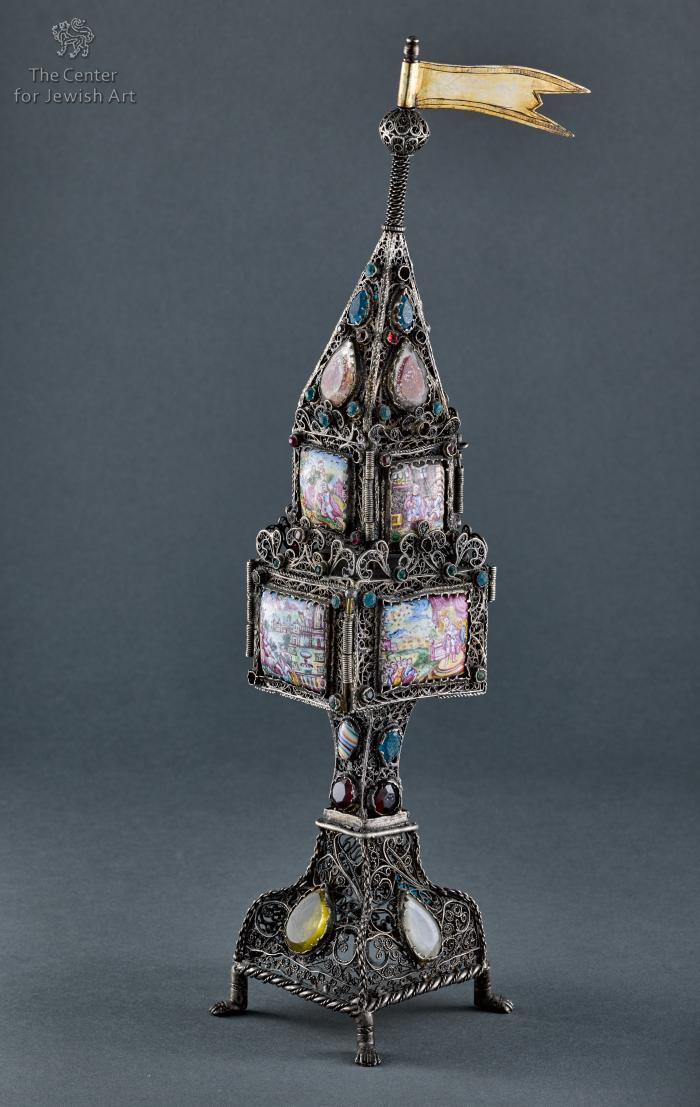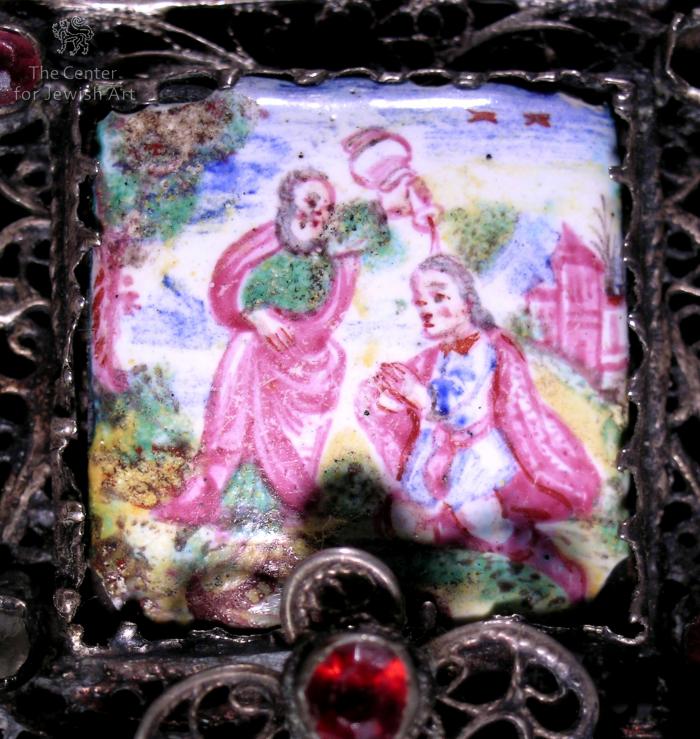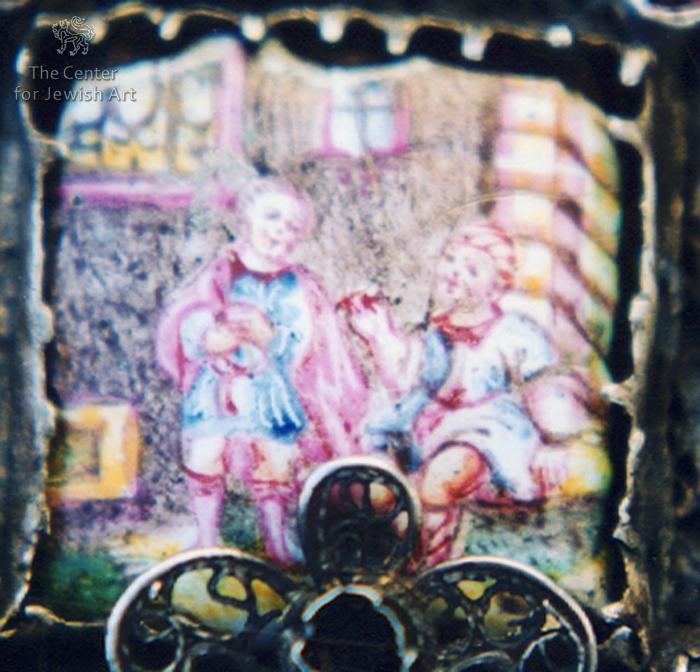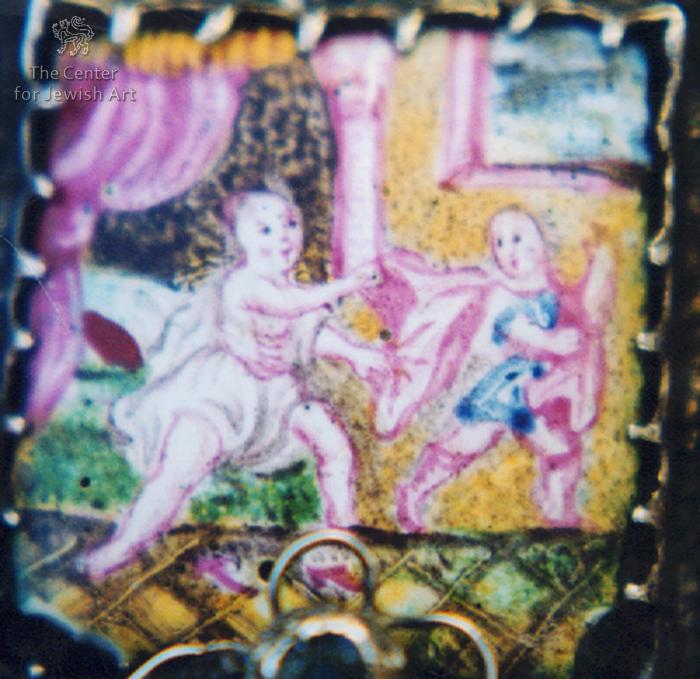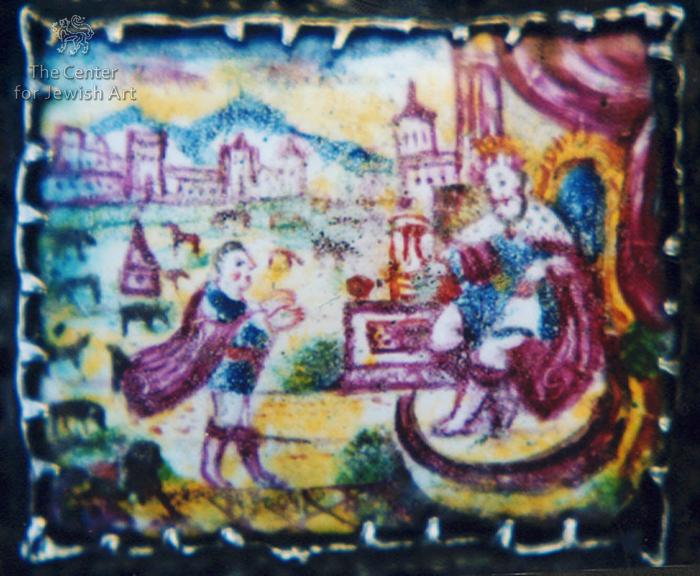Obj. ID: 35651 Besomim, Schwäbisch Gmünd, circa 1740
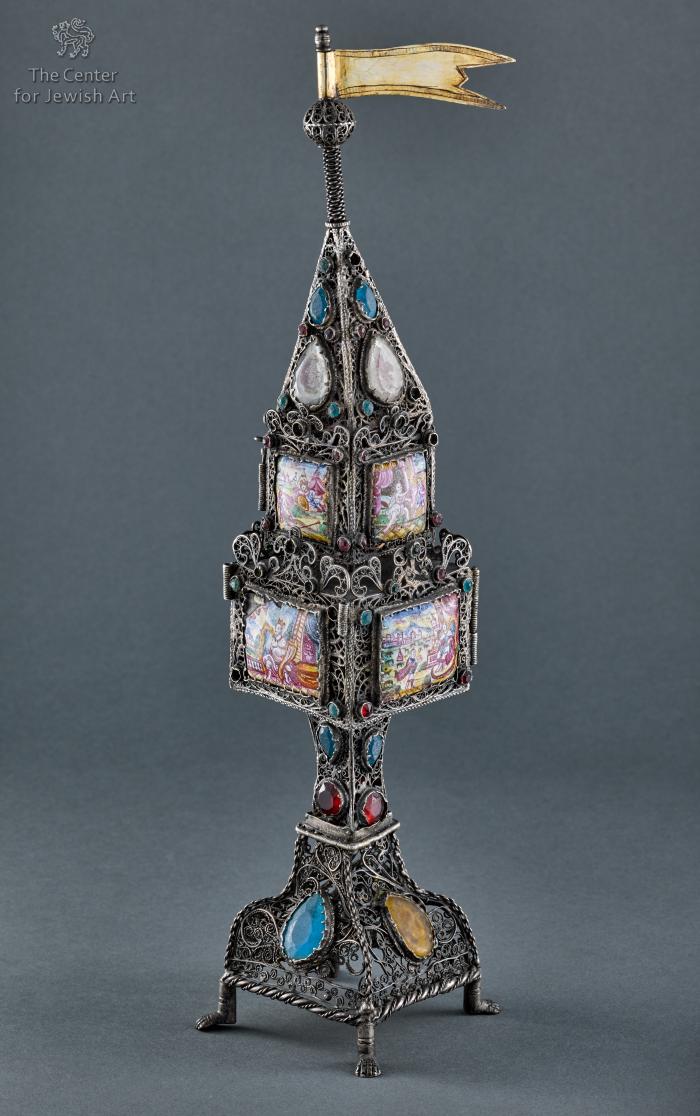
sub-set tree:
The following description was prepared by William Gross:
Long considered one of the most prestigious objects in Judaica, this type of large and elaborate filigree tower is set with pastes and painted enamel panels.
This example is one of eight remaining, recorded examples of this family, and is one of two in private hands. The techniques and features with which this tower is crafted indicate its origin in the city of Schwäbisch Gmünd, some 50 kilometers from Stuttgart. In the 18th century this town was the center of large scale production of religious jewelry and other objects, often using either or both such pastes and painted enamel panels. This family of eight towers is the only known Jewish objects produced during this period in the city. On them the enamels are painted with biblical scenes concerning various heroes of biblical stories, such as Joseph, David, Samson, etc., but having no apparent relationship to the use of the object in the Havdalah ceremony. It is possible that the images of biblical heroes were related to the names of the persons who ordered the towers, in this case Joseph and David. These towers are arguably among the most prestigious Judaica items existing.



